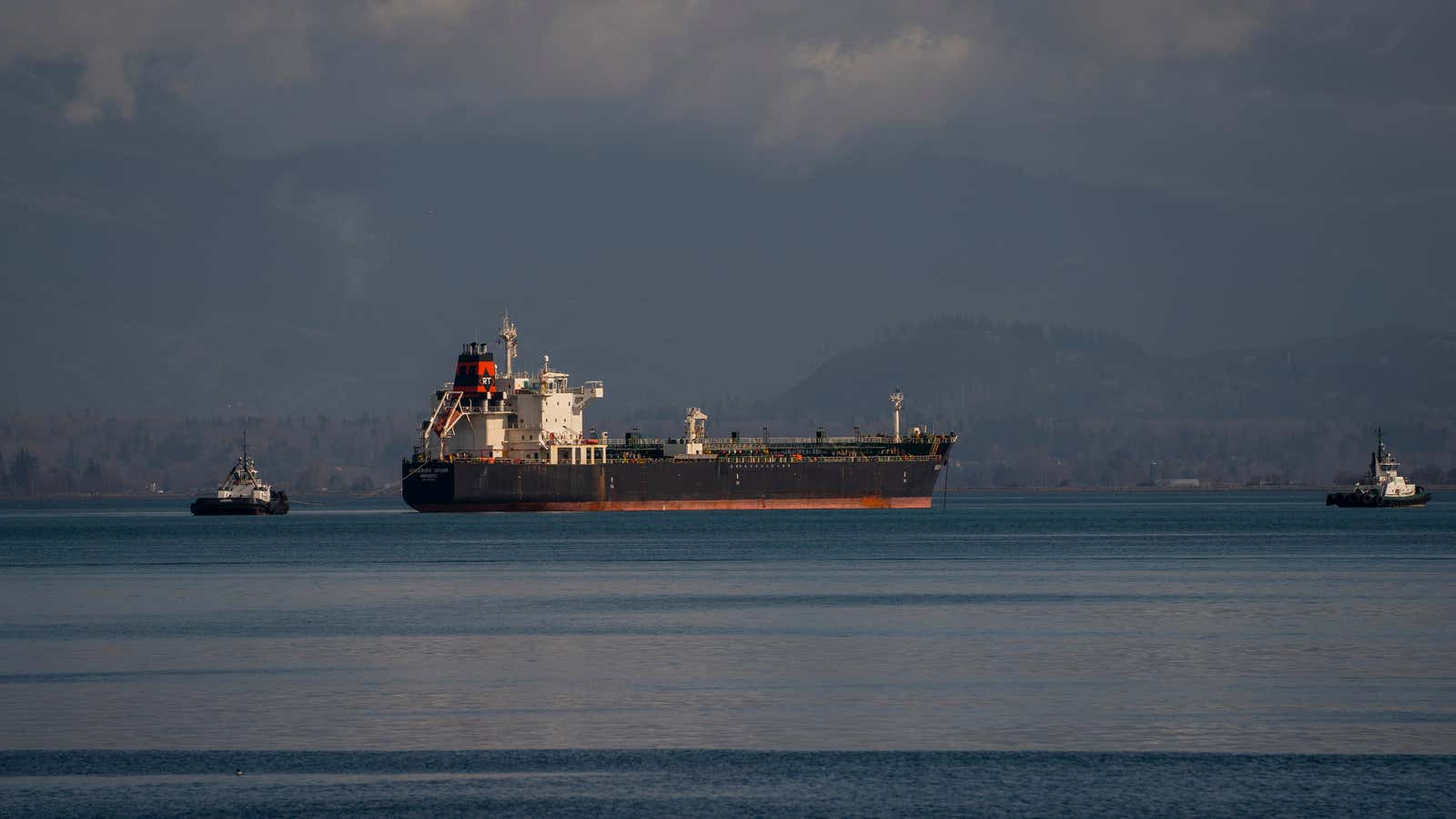Russia's Arctic Naval Power: Putin's Reawakened Shadow Fleet And Geopolitical Implications

Table of Contents
The Resurgence of Russia's Arctic Military Infrastructure
Russia's renewed focus on the Arctic is evident in the significant investments made in modernizing its military infrastructure. This modernization is crucial for projecting power and sustaining year-round operations in this challenging environment.
Modernization of Naval Bases and Ports
The expansion and upgrading of Russian naval bases and ports in the Arctic are key components of this strategy. Murmansk and Severomorsk, for example, have undergone extensive renovations and expansions.
- New Dry Docks and Repair Facilities: Significant investments have been made in constructing new dry docks and repair facilities, increasing the capacity to maintain and repair the growing Arctic fleet.
- Enhanced Fuel and Ammunition Storage: Improved storage facilities for fuel and ammunition ensure the sustained operational readiness of naval assets in the remote Arctic environment.
- Improved Port Infrastructure: Modernization includes upgrades to port infrastructure, allowing for efficient handling of larger and more advanced vessels. This includes improved berthing facilities and increased cargo handling capacity.
- Improved Communication and Surveillance Systems: New communication and surveillance systems enhance situational awareness and command and control capabilities within the Arctic region. These systems are crucial for effective naval operations in such a vast and remote area.
These improvements in Arctic military bases and Russian Arctic ports are strategically significant, enhancing Russia's ability to project power and maintain a persistent presence throughout the Arctic year-round. The enhanced naval infrastructure directly supports the operational capabilities of the expanding fleet.
Deployment of Icebreakers and Support Vessels
Russia possesses a powerful fleet of icebreakers, including nuclear-powered vessels, which play a crucial role in supporting military operations in the Arctic.
- Nuclear-Powered Icebreakers: Vessels like the Arktika and Sibir are capable of navigating even the thickest ice, enabling year-round access to strategically important areas. These nuclear icebreakers are vital for maintaining access to bases and resources, even during the harshest winter months.
- Diesel-Electric Icebreakers: Supplementing the nuclear fleet, a range of diesel-electric icebreakers provide additional support for various military and logistical tasks.
- Military Support Vessels: A range of dedicated support vessels, including replenishment ships and repair ships, ensures the long-term operational viability of the Arctic fleet. These military support vessels are essential for sustaining operations far from major bases.
This Arctic icebreaker fleet significantly enhances Russia's ability to operate throughout the Arctic, regardless of the ice conditions. This capability is crucial for asserting control and influence in the region.
Expansion of Russia's Arctic Naval Fleet
Russia's Arctic naval fleet is undergoing a significant expansion, encompassing new submarines and surface vessels, as well as enhancements to its air and coastal defense systems.
New Submarines and Surface Vessels
The Russian navy is deploying advanced submarines and surface vessels specifically designed for Arctic operations.
- Borei-class and Yasen-class Submarines: These nuclear-powered submarines are equipped with advanced weaponry and stealth capabilities, representing a substantial increase in Russia's underwater combat potential in the Arctic. These Arctic submarines are a significant deterrent to any potential threat.
- Modernized Destroyers and Frigates: Russia is deploying modernized destroyers and frigates capable of operating in the Arctic environment, providing air defense and anti-submarine warfare capabilities. These surface combatants bolster Russia's surface fleet capabilities in the region.
These additions to the Russian navy Arctic fleet, with their advanced naval weaponry, significantly strengthen Russia's ability to control key Arctic waterways and project power throughout the region.
Air and Coastal Defense Systems
Protecting Russian assets in the Arctic requires robust air and coastal defense systems.
- S-400 and Pantsir Air Defense Systems: These advanced systems provide long-range air defense coverage, protecting naval bases and other critical infrastructure from air attacks. These Arctic air defense systems significantly increase the security of Russia's Arctic assets.
- Coastal Defense Missiles: Coastal defense missile systems provide a significant deterrent against potential attacks from the sea. These systems further bolster military security in the region.
These robust coastal defense systems are a key element of Russia's strategy to maintain control and deter any potential aggression in the Arctic. The effectiveness of these systems is crucial for maintaining Russian Arctic defense capabilities.
Geopolitical Implications of Russia's Arctic Naval Power
Russia's strengthened military presence in the Arctic has significant geopolitical implications, affecting access to crucial shipping lanes and resources, and creating potential for increased international tensions.
Control of Shipping Lanes and Resources
The Arctic holds immense economic potential, particularly with the melting ice opening up the Northern Sea Route.
- Northern Sea Route: This shorter shipping route between Europe and Asia presents significant economic opportunities, and Russia seeks to control access to it. Russia’s enhanced military capabilities influence the use of the Northern Sea Route.
- Arctic Resources: The Arctic region is rich in oil, gas, and mineral resources. Control of these Arctic resources is a key driver of geopolitical competition.
Russia's enhanced naval power aims to control these crucial Arctic shipping lanes and secure access to these abundant resources. This pursuit significantly influences global trade and impacts the economic and strategic interests of other Arctic nations.
Potential for Conflict and International Tensions
Russia's growing military presence in the Arctic inevitably increases the potential for conflict and international tensions.
- Increased Military Activity: The increased military activity by Russia in the Arctic region raises concerns among other Arctic nations and NATO allies. This increased presence poses a potential challenge to the existing Arctic security environment.
- International Law and Treaties: The legal status of the Arctic and the application of international law in the region remain a source of potential conflict. Compliance with existing treaties and agreements will be crucial in mitigating the risk of military confrontation.
The risk of Arctic disputes escalating into wider conflicts cannot be ignored. Navigating these complex international relations will be crucial in maintaining global security.
Conclusion
Russia's significant investment in its Arctic naval capabilities is reshaping the geopolitical landscape of the Arctic. The modernization of its infrastructure, expansion of its fleet, and deployment of advanced weapons systems have profoundly altered the regional power balance. The potential for conflict and increased international tensions is a serious concern. Understanding Russia's Arctic Naval Power is crucial for comprehending the evolving geopolitical landscape. Continue your research to stay informed about this critical aspect of international security and the ongoing implications of Russia's Arctic ambitions.

Featured Posts
-
 Lara Croft Tomb Raider The Cradle Of Life Gameplay And Challenges
May 13, 2025
Lara Croft Tomb Raider The Cradle Of Life Gameplay And Challenges
May 13, 2025 -
 Pochemu Skarlett Yokhansson Ne Sdelala Selfi S Fanatom
May 13, 2025
Pochemu Skarlett Yokhansson Ne Sdelala Selfi S Fanatom
May 13, 2025 -
 Remembering Our Neighbors Recent Local Obituaries
May 13, 2025
Remembering Our Neighbors Recent Local Obituaries
May 13, 2025 -
 Karding Klarifikasi Terkait Isu Penempatan Pekerja Migran Di Kamboja Dan Myanmar
May 13, 2025
Karding Klarifikasi Terkait Isu Penempatan Pekerja Migran Di Kamboja Dan Myanmar
May 13, 2025 -
 Opportunities For A Professorship In Fine Arts Spatial Studies
May 13, 2025
Opportunities For A Professorship In Fine Arts Spatial Studies
May 13, 2025
